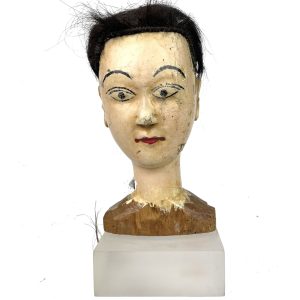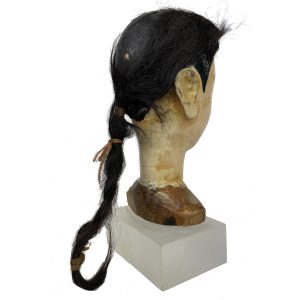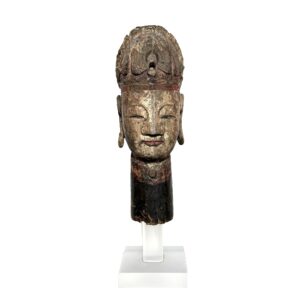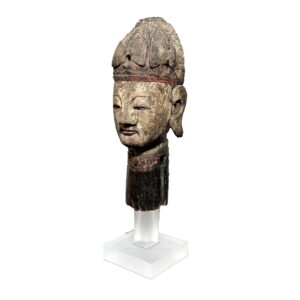-
Sale!


$295.00 Original price was: $295.00.$195.00Current price is: $195.00.
H: 8.5″ W: 4″ D: 2.75″ | FREE SHIPPING WITHIN CONTINENTAL U.S.!
Antique Chinese puppets were often made in several parts with removable heads. This antique carved head of a beauty has delicately painted features and an animal hair braided down the back. Since there is an area without hair towards the back, she likely originally wore a hat or headdress. A hole on top probably accommodated strings.
-


$495.00
Puppet theatre has traditionally assumed a major role in Chinese religious rituals and honoring major life and historical events. Local productions with beautifully carved puppets, music, drama and costumes instilled societal and cultural values as well as providing entertainment to audiences of all ages and educating provincial ones. This head has a typical tapering shaft…
-
Sale!


$625.00 Original price was: $625.00.$395.00Current price is: $395.00.
H:14.75″ W: 4″ D: 4.5″ | CALL 213-568-3030 OR EMAIL [email protected] FOR SHIPPING.
Antique Xiwangmu puppet head with 3 phoenixes in crown, traditional Qing head ware worn by the Empress for official occasions, ceremonies. Acrylic stand.
-
Sale!


$195.00 Original price was: $195.00.$135.00Current price is: $135.00.
Ht: 8.75″ D: 4″ D: 3.125″ | FREE SHIPPING within Continental U.S.!
This delightful doll mounted on a frosted acrylic stand is dressed as a bearded official wearing a traditional ‘spread-wing” official’s hat. Originally mounted on a wood stick seen under his attire, he wears a dark blue and gold robe with a loose black, red and silver official’s belt and boots. Although dressed as a Chinese official, he is clearly an entertainer. He holds a set of paper clappers (Kuaiban)– meaning “fast boards,” a two-millennia old Chinese castanets-like instrument made of bamboo or wood slats tied together which entertainers rattle, shake, or clap together to produce a complementary sound or beat. This piece is in excellent condition with expected signs of wear and use in the clothing and minor paint losses.
End of content
End of content








